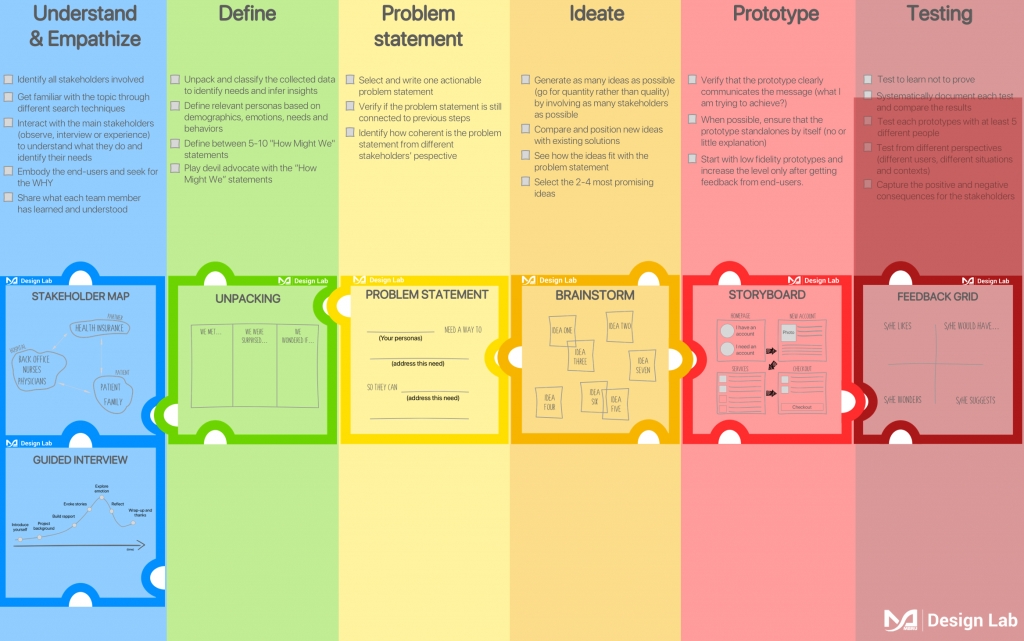Design Thinking is a very popular human-centered design approach to innovation. Although it has been used by millions of people, Design Thinking is not easy to learn and apply. This is notably due to its implementation, often by means of 4 to 7 step process, that aims to be used in many different settings and fields. However, for beginners it can bring some confusion and a sense of deception when the outcomes do not meet the expectations. As an answer the MBRU Design Lab created the MBRU Design Thinking Journey Map, a methodology that guides its users throughout the different steps of Design Thinking and provides techniques and tools to maximize the outcomes.
It consists of mainly two elements: A board that contains the Design Thinking’s steps as well as a set of 24 cards.

The board is divided into six columns representing six steps. Each step has a number of requirements that need to be completed. For instance, in the first step “Understand and Empathize”, the ”innovation designers” have to a) Identify all skateholders involved in the project, b) Intereact with the main stakeholders to understand what they do and identify their needs, c) Embody the end-users and seek for the WHY, and d) Share what each team member has learned and understood. To do so, the “innovation designers” can apply a number of techniques and tools that are explained by means of the puzzle cards. For instance, the Skateholder Map can be used in order to identify the entities and their link or the structured interviews can be apply to identify the needs. The shape of the cards (puzzle pieces) helps the users understand what techniques can be linked together. For instance, the shape of the card “Stakeholder Map” will not allow the user to link it to the “Brainstorm” card, which indicates that these two techniques should not be executed at the same time.